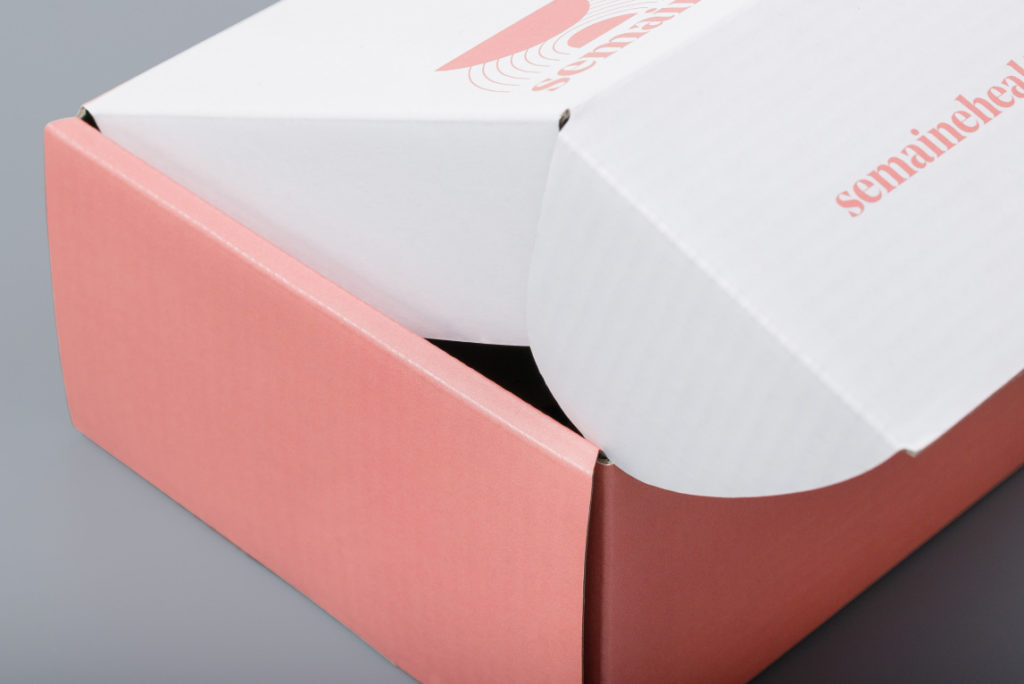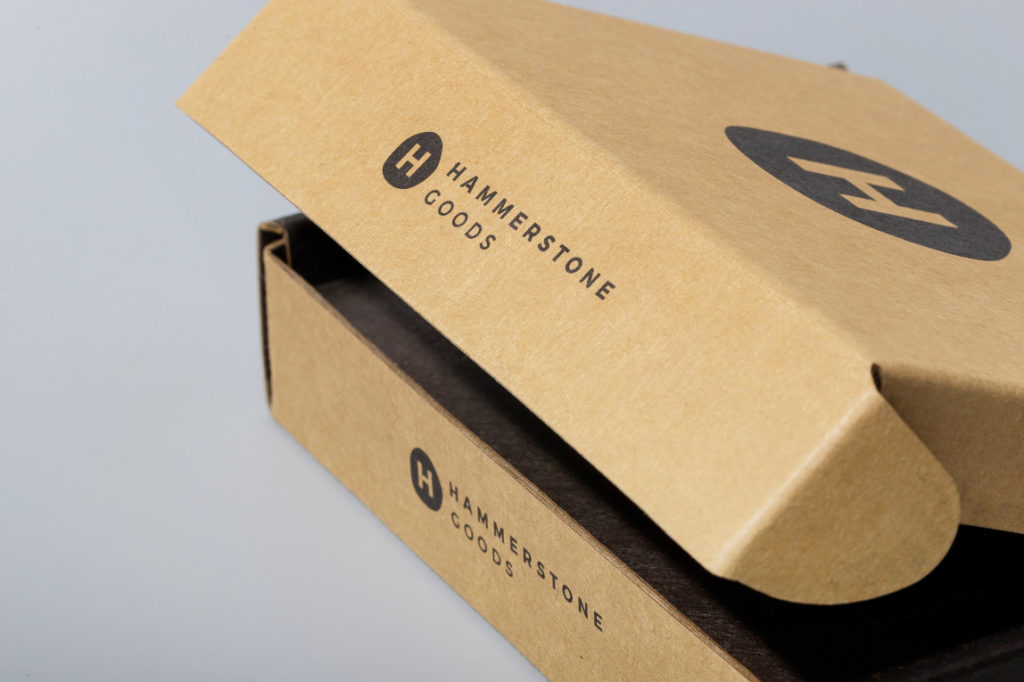With the rapid development of new technologies, innovations, and the streamlining of manufacturing processes in an effort for eco-friendly sustainability, the landscape of the e-commerce industry is expanding, evolving, and ever-changing.
The future of e-commerce and e-commerce packaging has never been brighter, as smartphones and the internet are becoming more readily available to a broader audience worldwide.
Still, your business must be ready to quickly adapt and adopt innovations and trends to be successful in a rapidly growing market saturated with competitors.
As it stands now, projections for the e-commerce industry show a growing market value of $61.55 billion by 2025.
And though the market is growing and more opportunities are presenting themselves to prospecting e-commerce businesses, so are the constant changes in trends and technological evolutions that companies need to keep up with to survive.
More and more consumers are deciding who they shop from not based solely on the product but also on external factors like package eco-friendliness, interactiveness, personalization, and innovation.
In e-commerce, the package is just as important as the product, and companies shouldn’t be afraid to adopt new alternatives and innovations!
So in this article, we will cover the emerging trends you need to know that are shaping the future of e-commerce packaging.
But before we get into that, what is e-commerce packaging?
Defining eCommerce Packaging
E-commerce packaging is the packaging used to ship products to the consumer after it has been purchased in an online store.
This packaging includes elements such as the outer box or mailer, infill materials, and any other inserts companies might add.

And though packaging originally came from the need to protect a product during shipping and handling, focusing solely on function is not the way to go in the current and future market of the e-commerce industry.
Marketing your brand through your packaging is crucial in e-commerce.
If done well, it can significantly increase your consumer’s unboxing experience, creating something memorable and worth sharing with others!
But what is the unboxing experience, and why is it so vital to an e-commerce business?
Packaging for eCommerce and the Unboxing Experience
On its own, unpacking a regular box is bland; there is nothing special about opening an unmarked box with no creativity or added surprises to go along with it.
However, in the current e-commerce market, many companies are starting — and should continue — to implement creative ways to enhance this typically boring activity of unboxing a product.
Yes, a package’s primary function is to protect the product, but that doesn’t mean it shouldn’t be used as a tool to enhance the customer’s experience too.
We mentioned earlier that packaging is just as important as the product in e-commerce, and this is why!
Safety & Brand Reputation
First and foremost, e-commerce packaging is essential for brand reputation and product safety.
Product protection is the most basic function required for all e-commerce packaging, and this fact will not change.
Customers are easily put off if receiving damaged packages, so ensuring your e-commerce packaging is strong enough to withstand shipping and arrive at your customer’s doorstep undamaged is a must.
Damaged packaging affects your brand’s reputation, so we cannot emphasize enough the importance of this point.
Product Promotion, Custom Packaging & Customer Attraction
A unique package that proficiently showcases a company’s brand image and personality will increase your product’s perceived value and the probability that prospective customers will purchase from you over other competitors.
In addition, the added experience and excitement created when unboxing a customized e-commerce package will encourage customers to share this unique experience with their family and friends on social media, further increasing your brand’s marketing reach.

Online influencers may even create social media content for your package and product by posting unboxing videos or pictures, enticing even more customers to your brand!
But if you are still not sure of the importance of the unboxing experience in the e-commerce industry, the below statistics should fully convince you:
1. 72% of American consumers say their purchasing decisions are influenced by packaging design.
2. 61% are likely to repeat a luxury product purchase if it comes in luxury packaging.
3. 35% of consumers report viewing unboxing videos; of this percentage, 55% were convinced to buy the product after watching said videos.
4. 40% of consumers will post a picture of your package on social media if it is unique or branded.
5. Finally, 50% of consumers would recommend your product if it comes in gift-like or branded packaging.
The statistics don’t lie, consumers love unique packaging, and the e-commerce market is going in a direction where plain boxes do not cut it anymore.
Customers now look for more than just a good product but also a company that shows its uniqueness and values through actions instead of written mission statements.
In the e-commerce market, shipping and fulfillment of orders are the most direct connection and touch point online retail companies have with their consumers, so it only makes sense that their e-commerce package needs to put their best face forward.
Companies must carefully consider many factors regarding their e-commerce packaging, leading us to our next topic.
Current State of eCommerce Packaging
With the market for e-commerce goods changing drastically and growing faster than ever, so too are the packaging methods and the customers’ values.
E-commerce websites have become a prevalent choice for purchasing goods due to their convenience, which includes direct-to-home delivery and easy product searching.
This factor was only amplified by the global pandemic lockdown beginning in 2019. Many countries established restrictions on gatherings and the movement of people and goods, further increasing demand for e-commerce solutions.
As of 2021, an estimated of over 2.14 billion people now shop online, and that number is only growing.
However, alongside a rapidly growing e-commerce industry comes the increased waste produced and the logistical requirements needed for the millions of packaging transported to customers regularly.
Standard Packaging Materials Used for eCommerce Packaging
Currently, there are a few options commonly used among e-commerce businesses.
Corrugated shipping boxes and padded mailers have become staples in the e-commerce market.
Corrugated boxes are the most typical e-commerce packaging used by online retailers as they are sturdy, don’t add weight to your packages, and can be thoroughly customized to enhance the unboxing experience for your customers.
Additional packaging materials, such as air pillows, tissue paper, packing peanuts, and bubble wrap, are also commonly added inside the exterior packaging to fill void spaces and prevent products from shifting during transport.
Corrugated boxes are also recyclable, but whether they are correctly disposed of is another problem; more on this issue soon.
The other most common e-commerce packaging is the padded mailer.
Padded mailers are best for shipping smaller, flat, or delicate items such as jewelry, books, handcraft items, or electronics.

And like the corrugated box, added filler like paper and bubble wrap are also commonly used for added protection.
But though both options are great for protecting the product and customizing your package to cater to the unboxing experience for customers, the same is only partially true regarding sustainability and eco-friendliness.
Thankfully, we will discuss many new and innovative sustainable packaging options later in this article, but first, we must cover the challenges.
The Challenges with Online Shopping and Packaging
Shipping and Logistics
Before we dive more into detail about the negative environmental impact of e-commerce packaging, it is also essential to note the mounting challenges with shipping and logistics, as this section of the industry plays an irreplaceable role in e-commerce.
With the increasing demand for more and more products, shipping and logistics poses challenges, which also need to be addressed by e-commerce businesses.
E-commerce businesses need to take into consideration the following as the e-commerce market grows and expectations rise:
1. Tracking – Customers need to know where their package is at all times, even if there is a delay. E-commerce companies must ensure their customers can track their packages with regular updates to ensure a smooth experience.
2. Shipping Costs – Shipping accounts for massive costs when running an e-commerce business. Companies must balance pleasing the customer without affecting profit margins and raising prices, which may deter customers.
3. Product Returns – 56% of online shoppers make purchasing decisions based on return policies. Businesses need to consider a good return policy for their company to avoid missing out on potential business.
4. Scalable Logistic Operations – This factor is double true with the growing e-commerce market. Businesses need to plan dynamic scaling solutions to accommodate spikes and drops in sales without overextending their resources.
5. International Shipping – With global reach as easy to access as ever, e-commerce businesses must be aware of additional fees like customs, import fees, and taxes to avoid surprise costs on international customers.
6. Warehousing – Knowing where to store your merchandise can significantly help e-commerce businesses save money. Companies must consider the size and location of their warehouses to optimize and prevent unnecessary costs.
7. Shipping Errors – Wrong shipping addresses, lost tracking numbers, and incorrect package weight can be a significant headache for e-commerce businesses and consumers. Thankfully, new technologies in packaging can help mitigate this, which we will cover later.
8. Delivery Security – Unfortunately, package theft is common. Ensuring packages get delivered to their rightful owner is challenging, but notification alerts, designated delivery points, and many other options can be considered to mitigate this issue.
9. Environmental Concerns – Finally, coming back to ecological concerns, it is not only e-commerce packages that can harm the environment, but transportation as well. Companies should consider consolidated packaging and weight to mitigate the need for additional trips.
Whether you are a new or established e-commerce business, shipping and logistics will always be challenging.
However, with proper planning and implementation, these challenges can be mitigated, allowing you to focus on the next major challenge: environmental impact.
Environmental Impact of eCommerce Packaging
Yes, recycling standard e-commerce packaging is possible, but whether it is being recycled is a different matter.
To make the environmental situation worse, the future of e-commerce is on a meteoric rise, and the need for packaging is rising along with it.
Statistics show that global consumption of paper and paperboard totaled 408 million tons in 2021, and is projected to reach 476 million tons by 2032.
And of these 408 million tons of paperboard and paper consumption, packaging accounts for the majority.

Along with this massive amount of consumption of paper resources, the e-commerce industry also accounted for approximately 2.1 billion pounds of plastic packaging in 2019, with a projected growth of 4.5 billion pounds by 2025.
But while both plastic and paperboard can be recycled, the fact is that this is not always the case.
Packaging waste is often improperly disposed of and in landfills or as litter on our streets or oceans.
The American Forest & Paper Association reported that corrugated recycling was 91% in 2022, but only 13.3% for plastic.
The amount of waste the e-commerce industry produces is staggeringly high, but many companies still hesitate to switch to more sustainable methods.
This hesitation stems from various factors, such as the relative innovations in packaging, reluctance to accept the risks of being an early adopter, and the higher setup cost and resources to adopt these innovations.
Many e-commerce businesses adopt a “wait-and-see” approach and prefer to maintain the status quo instead of taking the first step.
And though many package carriers and manufacturers are beginning to provide solutions and eco-friendly alternatives to standard packaging, consumers ultimately have the most influential voice to push for sustainability.
At the forefront of this change is the need for consumers to push for sustainable e-commerce packaging, and this is what is starting to happen!
Future Trends in eCommerce Packaging
The future of e-commerce packaging is moving in a direction that favors sustainability, personalization, and technology.
Though we’ve mentioned that many companies are hesitant to move to innovative creations and sustainable options, consumers are speaking with their choices on who they do business with.
More and more consumers are looking for companies that offer sustainable, personalized, and eco-friendly options, proving effective in shaping the future of the e-commerce landscape.
Businesses are taking notice of this demand and are now adopting such practices to the benefit of everybody.
Technology and innovation are not something that should be feared but embraced. Innovation is done to advance society and make everything easier for businesses and consumers.
This notion applies to both the e-commerce industry and society.
Embracing change and innovation will only prove beneficial and make for smoother and easier operations.
With that being said, let’s now get into the future trends in the e-commerce industry.
Sustainability and Eco-Friendliness
Consumers are becoming more vocal about the materials and sources used when manufacturing packaging as the awareness about e-commerce waste, particularly plastic, grows.
To keep up with this trend, e-commerce businesses must dedicate time and resources to improving their processes, which may cost significant money, but the benefits are worth the price!
Starting with sustainable sourcing and manufacturing, companies can begin by changing who they source raw materials for their packaging.
Sustainable sourcing and manufacturing integrate social, ethical, and environmental considerations when choosing suppliers of raw materials and manufacturers of e-commerce packaging.
By carefully selecting suppliers who ethically source renewable resources and choosing manufacturers who strive to reduce waste, energy consumption, and pollution, e-commerce businesses can take the first steps in creating a more eco-friendly initiative.

The next step businesses should take to keep up with this trend is to consider sustainable materials in their packaging.
Biodegradable and compostable materials are becoming more popular in e-commerce packaging and for a good reason.
Unlike plastic, biodegradable packaging materials are designed to break down without leaving any harmful compounds and can also break down anywhere between several days to a year.
Compared to 450 years for some plastics that will also leave behind toxic compounds, it’s a vast improvement in eco-friendliness!
And on the other hand, compostable packaging is also on the rise as a popular e-commerce packaging option.
Like biodegradable packaging, compostable packaging can break down without leaving any toxic traces and provide valuable nutrients to the soil, but the proper conditions are required.
Some compostable packaging can be disposed of in the home, but many compostable options currently require an industrial composting facility to achieve these environmental benefits.
Regardless of the steps businesses take to improve sustainability, eco-friendliness among consumers is becoming an increasingly important factor, and companies need to cater to this demand.
However, this does not mean being eco-friendly doesn’t benefit your business!
Dedicating your company to an eco-friendly initiative not only strengthens your brand image in the eyes of the consumer but will also lead to reduced costs and increased profits in the future.
By promoting and pushing a sustainable initiative for your business, you are protecting the planet and reaching out to the rapidly growing “conscious consumer” base.
Furthermore, finding ways to streamline your processes and reduce waste will inherently save costs in many facets like sourcing raw materials, manufacturing your e-commerce packaging, and transportation.
Overall, with the positive brand image and the streamlined processes, switching to sustainable means may be costly to set up, but it is well worth the investment in the long run.
Personalization and Customization
However, sustainability and eco-friendliness isn’t the only trend growing in the e-commerce market.
We thoroughly discussed how the unboxing experience plays an essential role in customer satisfaction, which is still the trending case in the future of the e-commerce market.
The unboxing experience has become even more important than before!
With an ever-growing e-commerce market and competitors vying for the consumer’s attention, e-commerce businesses must do more than offer a good product.
To retain customer loyalty, businesses also have to engage with their audience.
And one of the best ways to do that in an online retail environment is to provide a personalized packaging experience.
Consumer expectations for e-commerce businesses are at an all-time high, and consumers expect brands to recognize them.
80% of consumers are more likely to purchase from brands offering personalized experiences, while 66% say that a lack of customized experience hampers their likeliness to buy.
To provide this customization and personalization to your e-commerce packaging, consider the demographic of the audience you are trying to reach. Think of things like their age, gender, and even the product they’ve ordered.
Consider including custom inserts with your e-commerce package, like coupons, samples, or gifts in line with your targeted audience and the product they ordered.
In such a saturated e-commerce landscape, personalization can mean the difference between buying from your brand or choosing another brand over yours!
Technology and Innovation
The final trend in the e-commerce market we will discuss is new and innovative technology.
Just under a decade ago, virtual reality and augmented reality were science fiction ideas. Now in the present day, it is no longer the case.
Technology has been rapidly improving, and with innovations come new trends in all markets, including e-commerce.
Smart Packaging and Internet of Things Technology
SmInnovative packaging is one such trend that has made the e-commerce industry more transparent and interactive.
Using technology, smart packaging aims to enhance customer experience and make the challenges e-commerce businesses might encounter easier to manage.
And in a similar vein, Internet of Things (IoT) technology also aims to do this.
We’ve already discussed the importance of personalizing and customizing the consumer’s experience to make it an enjoyable and memorable one, but IoT technology and smart packaging further help with this.’

We mentioned earlier that new technologies have become available to help mitigate shipping and logistics challenges, and this is it!
The Internet of Things describes devices with software, sensors, and other technology able to interact with other devices over the Internet.
Devices with IoT applications and smart packaging help e-commerce companies with the following:
1. Inventory Management – RFID tag technology allows e-commerce businesses to keep track of their inventory, potential expiration dates, and type of product quickly and efficiently without involving a human.
2. Supply Chain Management – RFID tags also allow businesses and consumers to keep track of their packages throughout the transportation journey and receive real-time information about package conditions, weather, and arrival times to prevent wrong or missing deliveries.
3. Customized Information for Individuals – IoT technology also allows consumer data collection to further enhance personalized online shopping experiences.
4. Customer Experience – Similar to customized information for individuals, IoT allows e-commerce businesses to stand out from competitors. IoT can track social media and shopping trends so companies can tailor advertisements specifically for the consumer.
5. Troubleshooting – IoT can also discover potential issues like cart abandonment, missing shipments, low engagement, and return rates and implement changes through data collection, strengthening the supply chain and improving customer experience.
6. Performance Analytics – In a similar vein to troubleshooting issues, IoT can also do performance analytics to allow e-commerce businesses to determine key areas that require improvement.
7. Warranty and Maintenance – Finally, devices integrated with IoT allow businesses to assess, forecast maintenance, and examine performance remotely. If a product is malfunctioning, companies can pre-emptively contact the consumer to offer repairs or replacements.
Smart packaging and IoT have significantly improved the experience for consumers and e-commerce businesses by creating more transparency and connecting us more than we ever have been connected before.
But the innovation doesn’t end there!
Augmented and Virtual Reality
We also briefly mentioned augmented (AR) and virtual reality (VR).
AR and VR are still relatively new technologies but have been progressing and evolving at a breathtaking pace.
Just a couple of years ago, VR was limited to expensive headsets and shoddy interfaces, but no longer.
Now, there is no shortage of AR or VR applications that e-commerce businesses can use to enhance a customer’s online shopping experience!
Some applications include the following:
1. Virtual Try-Ons (VTOs) – Currently, the most well-known AR usage is with VTOs, where consumers can utilize their phones or other devices to try on products virtually. This allows consumers to make more informed decisions before making purchases.
2. Recreating the In-Store Experience – Creating a VR store to showcase your products is another fun and interactive way to engage consumers.
3. Building Brand Awareness – AR and VR don’t solely have to be about sales. Combining IoT technology like QR codes and a fun interactive AR or VR experience for the customer is a great way to build brand awareness and improve customer experience.
4. Interactive User Manual – If businesses are looking for more reserved methods to utilize AR and VR, interactive manuals are also an option. Consumers can scan the product and get an interactive tutorial on the product’s features and functions.
The Future of E-Commerce is Technology and Innovation
With new technologies and innovations, the possibilities for growth in the e-commerce industry are endless.
Though e-commerce businesses might be hesitant about these changes, implementing and adopting these innovations early will only prove beneficial for your business.
The world is changing, and e-commerce is at the forefront, so businesses need to adapt and evolve alongside the industry.
E-commerce is mainly an online experience and, therefore, is very susceptible to innovations and new technologies, but it’s not something to be wary about!
The challenges to running a successful e-commerce business will only lessen as technology advances!
And as more smart packaging, IoT technology, and sustainable options become available, consumers will continue to lean into these innovations, so companies should follow suit.
Ultimately, technology and innovation are here to make life easier, more efficient, and hassle-free; it is not something to be wary about and hesitant to adopt.
So instead of a “wait-and-see” approach, e-commerce businesses should embrace technology and innovation.
After all, evolution is the process of adapting and changing to accommodate the environment. So if the environment calls for sustainable packaging, personalized customer experiences, and integrated technology, then so be it!



































